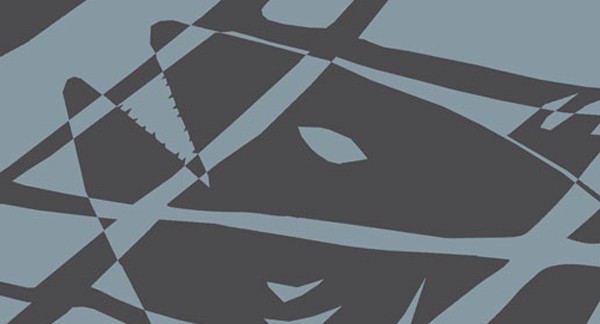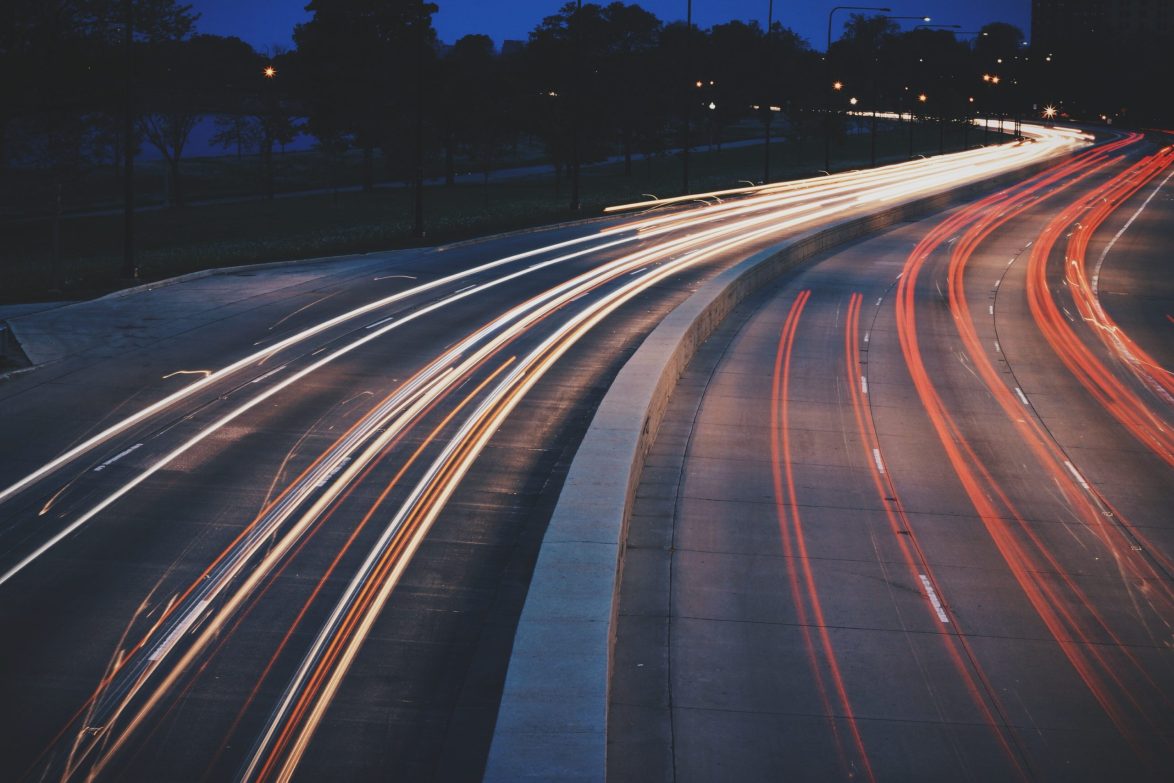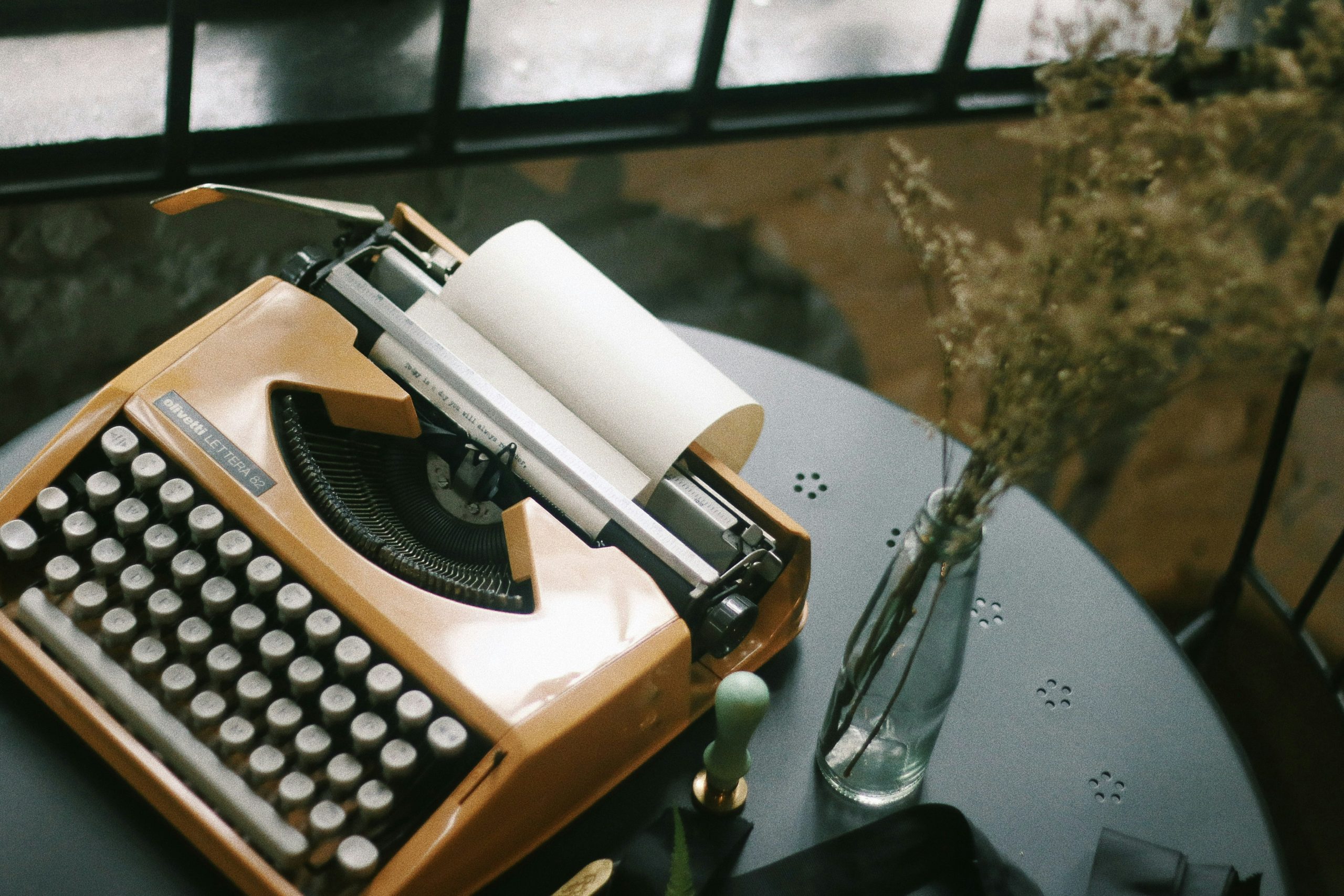essays
In Praise of the Messed Up Mind: Synesthesia, Substances, and the World Anew and Askew

by Molly Prentiss

Last night I was sitting at a restaurant with a writer friend — let’s call him Ed because his name is Ed — arguing over the colors of the days of the week.
Mondays are blue, he said.
No Mondays are bright red, I said.
Fridays are black, he said.
No Fridays are blue, I said.
We disagreed on all the days with the exception of Thursday, which we both agreed was brown. We also agreed it was strange that Thursdays were brown because Thursdays are always the most fun and brown is the least fun color.
We were having this conversation because moments earlier I’d busted out one of my favorite bar tricks, which is listing off famous people who have synesthesia. Synesthesia is a neurological condition in which the cognitive pathways that relate to one’s senses — sight, smell, touch, sound, etc. — are swapped, and I’m mildly obsessed with it. A synesthete might see the color red when he hears the sound of bells, for example. Or smell roasted peanuts when he reads the word dog. The sensations are automatic and involuntary. Many synesthetes describe its visual manifestation as a sort of screen in their minds eye, the colors or images floating atop whatever is in their sightline — a scrim of sensation between them and the rest of the world.
Mary J. Blige! I had been yelling happily to Ed. David Hockney! Nabokov! PHARELL. Kanye says he does, but does he? You never know with Kanye. And Jewel, and Jimi Hendrix, and Van Gogh…Isn’t it fascinating?
Ed was moderately fascinated. Makes sense to me, he said. A brain that misfires to connect colors and sounds and smells? I’d say they’ve got an edge on the rest of us — their brains doing all this linking automatically, and we’re busting our asses trying to write our fussy similes. Don’t you think?
I’d say they’ve got an edge on the rest of us — their brains doing all this linking automatically, and we’re busting our asses trying to write our fussy similes.
I did think. In fact, it was one of the things I thought about a lot. I coveted the synesthete’s highly specific associations and heightened sensations — things I thought would most definitely be benefits in making art or writing. I’d dreamed of that sexy screen of elaborate colors and sounds that coordinated themselves into my daily life, allowing me to feel more than I ever knew was possible. I craved that portal into a new way of seeing, that provocative sensory shift, that messed up, magnificent mind.
***
When I am writing, I often find myself grasping for some altered state. I drink many cups of coffee, until my hands and mind feel shaky and shaken. I take any low-key leftover drugs friends offer — Adderall, dusty pot, vague pills from Mexico, given to me by an ex-boyfriend, that make me feel simultaneously focused and twisted. If it’s evening enough, I drink wine. For whatever reason, I find its easier to say what I think if my thinking is a little skewed.
Occasionally, though, I can enter a specific mental freedom without such moderate substance abuse, and I credit this state for most of writing I’ve done that I consider good. When I am in it, words whistle out of my fingertips, sentences sail onto the screen — it is as if the writing was already fully formed, as if I were simply seeing or feeling something and describing it: that easy. I feel unbridled in my thoughts and limber in my execution of them. Obscure and sometimes seemingly absurd connections come freely and unexpectedly, surprising even me. This writing state feels so far removed from the everyday toiling I do, the wrenching of words into their place, the tough, sticky metaphors, the scratched up outlines. It is as if, in these moments, the barrier between my mind and the page is lifted, the distance between me and my ideas shortened. It is inside these moments that the writing dances and sings.
But these sprees are fleeting. They abandon me, leave me alone with glaring blank screens and unfinished sentences. The distance between me and the work widens and sprawls again, until I am inhabiting a different island than my art, and between us is a large black sea.
Is a synesthetic brain naturally better equipped to create — like a music prodigy, in whom notes and songs seem to be engrained at birth? And as such, does a creative outlet become practically necessary?
But what would it be like if the metaphor I was searching for was not a metaphor at all, but my reality? What if I could simply write down what was happening in my body, or in front of my eyes, and that would be that? It makes me wonder if the workings of a synesthetic mind make art feel more available, the distance from it lessened. Is a synesthetic brain naturally better equipped to create — like a music prodigy, in whom notes and songs seem to be engrained at birth? And as such, does a creative outlet become practically necessary? Is the very nature of the condition — the connections between unlikely things — the essence of creative thought? Which leads me to the question: If a synesthte creates a work of art based directly on the associations in his or her brain, does that mean that the synesthetic mind is a work of art in itself?
***
Richard Cytowick and David Eagleman, co-authors of Wednesday is Indigo Blue: Discovering the Brain of Synesthesia, write:“…synesthetes have more abundant connections among conceptual maps and accordingly are more facile at linking superficially unrelated concepts and seeing deep similarities in seemingly unrelated realms. Likewise, they have a higher aptitude than nonsynesthetes for figurative speech.” So it is true; a synesthetic brain — specifically its “angular gyrus at the junction of the temporal, parietal and occiputal cortices” — is hardwired for the type of thought that creative people count on: connecting the unconnected.
Kandinsky described listening to Wagner like this: “I saw all my colours in my mind; they stood out before my eyes. Wild, almost crazy lines were sketched in front of me.” Kandinsky’s wild lines: not imagined or dreamed, but seen, witnessed.
Juxtaposition is the natural work of the synesthtetic mind; metaphor is a synesthete’s mental currency.
Hockney seeing the trees on the side of the road as purple, painting straight from what he knows as life.
Jewel blinking in orange flashes when she hits one of her famous guttural low notes.
“All art is juxtaposition,” wrote British poet and academic Robin Skelkin. “Placing images beside each other in such a way as to suggest previously unnoticed or unimagined relationships.” Juxtaposition is the natural work of the synesthtetic mind; metaphor is a synesthete’s mental currency. Whereas I can sit for hours searching for the perfect way to describe the color of a certain dusky sky, a synesthete might simply explain the things he experienced while looking at that sky: the taste of papaya, maybe, or a heat in his hands. This description, for him, is not a metaphor but a reality. Where as my metaphor might be more direct — a sky that was as purple as a bruise, say — it would also be, by definition, less true. My metaphor is a fabrication, a fiction. I did not feel my skin bruising as I searched the sky.
***
Of course, synesthesia isn’t all rose colored glasses and invisible rainbows. Biologically, the condition is actually considered “useless”; it doesn’t increase someone’s chances for survival, make the more attractive to a mate. In fact, it has been known to do the opposite; many synesthetes speak of being ostracized for their condition, especially in their early lives. No one around them can understand why their perception of the world is so different than everyone else’s, why they are so affected by their surroundings, why they might answer a math problem with the word beige. (This was common especially for those born before the advent of MRIs, which could validate the cross firing of their synapses and legitimize their uncommon perceptions.) Because their way of seeing is unrecognizable to others, they are often considered crazy or wacky or out of touch; their opinions are cast aside.
No one around them can understand why their perception of the world is so different than everyone else’s, why they are so affected by their surroundings, why they might answer a math problem with the word beige.
This, of course, is a common theme among many artists, even those without quirky neural conditions. An artist, to my mind, is anyone who has a fresh or particular or nuanced way of seeing the world around them, and who can translate that way of seeing into a work or idea that others can explore or inhabit. These perspectives are often read as problems, dubbed as illegitimate. Part of the artist’s lot is to persevere with her way of seeing and with her work, despite being, by nature, differently-minded than most. It is lucky when the world changes its mind to accommodate or appreciate hers, but this does not always happen. Often, genius isn’t recognized until death, until it’s left this world for another more expansive one.
Sidelining the mistrust of the outside world is the problem of mistrusting oneself, the constant questioning and self doubt that is so routine in the inner life of any artist. The fear that the connections one is making in their work might not be valid or real, that what one has to say is unimportant or unintelligent. This questioning erects a thin, nearly invisible wall, creates a distance that separates you the oddest depths of your own mind, and therefore from you work. The artist’s job, then, is to learn to distrust that wall, to see through it in order to get closer to her original mind, her original mental mode. In many cases, seeing through it isn’t enough; she’ll have to rip down the whole thing of the wall, trust that the structure will hold, relish in the new view through the gaping hole they just made.
Synesthetic poet Arthur Rimbaud said: “The poet makes himself a voyant through a long, immense reasoned deranging of all his senses. All the forms of love, of suffering, of madness; he tries to find himself, he exhausts in himself all the poisons, to keep only their quintessences.” In other words, the artist must actively pursue skewed perception, chase demons into dark corners, obtain insanity. She must actively pursue the mess of her own mind.
***
There is a long history of artists and writers using drugs or alcohol when they work. Susan Sontag has spoken fairly freely about her use of speed, claiming it allowed her to be less constrained as she wrote, to be loose, to unlock a river of fast, new ideas. Ditto Sartre, ditto the Beats. Cocaine fueled Robert Louis Stevenson’s creation of Dr. Jekyll, not to mention the inventions of Thomas Edison or the drastic conclusions of Sigmund Freud. Dickens did opium. Then there are the classic alcoholics: Hemingway, Van Gogh — the list goes on.
Why do so many creative people, people whose minds are arguably the sharpest or most brilliant, want to alter those minds, fuck them up? What is it about the jostle of the drug or the blur of the alcohol that is attractive, specifically, to the artist?
Sure, there is an element of personality involved; artists have the reputation of being depressed, sensual, open, needy…all traits that can lead them to inebriation. But one also has to believe, as Sontag suggests, that something of it has to do with fueling their creative work — a desire to twist their perception for the sake of creative vision, the need to feel and see things differently in order to crack a creative code. (Artists seek escape from many tyrannies, one being their own innate sense of things.)
What is it about the jostle of the drug or the blur of the alcohol that is attractive, specifically, to the artist?
The mess of one’s mind is terrifying, and culling one’s layers of rational and regular thought to get there is some of the hardest work an artist must do. It is painful, not only to touch at one’s own soft core, but to recognize one’s own inner madness, one’s weird way of working, one’s anomalous way of being. Again and again, the artist must remind himself that he is different, and that even when this is working in his favor, he will never be like anyone else. Often, one needs to be in an altered state to allow themselves to get to their original altered state, make themselves feel different to allow themselves to be different.
It seems to me that when one is drunk or high, that distance — between one’s actual experience of the world and what they allow themselves to create — shortens a bit. As the brain becomes altered — dopamine increases, new cortexes light up, inhibitions dwindle — the cloak of perpetual fear can be lifted, perhaps even removed. Sight is blurry or tilted, maybe, thoughts slide outside their normal boxes. A room becomes a boat, and suddenly you are sailing toward a very slightly different world. A world you could write about, and in which you can write.
***
Apparently, we are all a little bit synesthetic. Cytowik, in 2009 interview, stated: “…cross-talk among the senses is the rule rather than the exception — we are all inward synesthetes who are outwardly unaware of sensory couplings happening all the time.” He sites dancing as an example: our bodies moving naturally to rhythms produced by sound. And watching a movie: our eyes seeing a screen and our ears hearing speakers, our brains doing the work to merge the two senses together so that we believe the actor is actually speaking to us. In other words, we may not all see fireworks behind our eyelids when we hear orchestra music, but our brains are still cross-pollinating in ways we don’t even notice or acknowledge, all the time.
In extrapolation, we are all natural metaphor makers and understanders. Cytowick sites our collective association of dark colors with lower sounds, for example, and deeper smells. Light colors with higher sounds and brighter, fresher smells. When we describe wine, we might very well sound synesthetic. It’s deep and round, we might say about a lush red. Or for a white: it tastes like a day at the park. It’s bright. It skips across the tongue.
This makes me wonder about my conversation with Ed. Neither of us have synesthesia, and yet we were so adamant about the colors of the days. Sure, our associations were probably left over from kindergarten color wheels or the calendar on our mom’s fridge when we were growing up. Or perhaps they were just based on how we felt about a day — Ed said Monday was blue because it felt fresh, like a new start. But for whatever reason, they are there in our mind like imprints, old memories or mental links that linger like stains. Though we can’t see them, they are defined and strong, perhaps even fixed. If this is the case, our only job as writers is to travel the distance between the thought and the page.
The unexpected is scary; not everyone allows for it.
Modernist sculptor Constantin Brancusi said: “To see far is one thing: going there is another.” What exists in the space between seeing and going? What dark mess lies there that makes it so difficult to traverse? It is within this space that anything can happen, where truth can emerge, where messes are made. The unexpected is scary; not everyone allows for it.
Perhaps what separates an artist out from the rest is not simply an innate ability or built-in way of seeing. Perhaps it is also her willingness to travel through this bog of truth, and to come out the other side with the hinge that connects vision and reality. She might have to get miserable for a moment, in the aching heat of her own sensations. She might have to wallow in Monday’s blue, or she may have to invent a color she’s never seen. Most importantly, she’ll have to hop into the messy ship of her own mind, trust it to get her where she wants to go, or even where she doesn’t.









